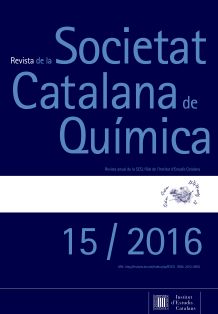New methods for CO2 capture and separation applicable to industrial processes
Keywords:
CO2, gas separation, faujasite, MOF, post-combustion.Abstract
Downloads
Downloads
Issue
Section
License
The intellectual property of articles belongs to the respective authors.
On submitting articles for publication to the journal Revista de la Societat Catalana de Química, authors accept the following terms:
- Authors assign to Catalan Society of Chemistry (a subsidiary of Institut d’Estudis Catalans) the rights of reproduction, communication to the public and distribution of the articles submitted for publication to Revista de la Societat Catalana de Química.
- Authors answer to Catalan Society of Chemistry for the authorship and originality of submitted articles.
- Authors are responsible for obtaining permission for the reproduction of all graphic material included in articles.
- Catalan Society of Chemistry declines all liability for the possible infringement of intellectual property rights by authors.
- The contents published in the journal, unless otherwise stated in the text or in the graphic material, are subject to a Creative Commons Attribution-NonCommercial-NoDerivs (by-nc-nd) 3.0 Spain licence, the complete text of which may be found at http://creativecommons.org/licenses/by-nc-nd/3.0/es/deed.en. Consequently, the general public is authorised to reproduce, distribute and communicate the work, provided that its authorship and the body publishing it are acknowledged, and that no commercial use and no derivative works are made of it.
- The journal is not responsible for the ideas and opinions expressed by the authors of the published articles.














